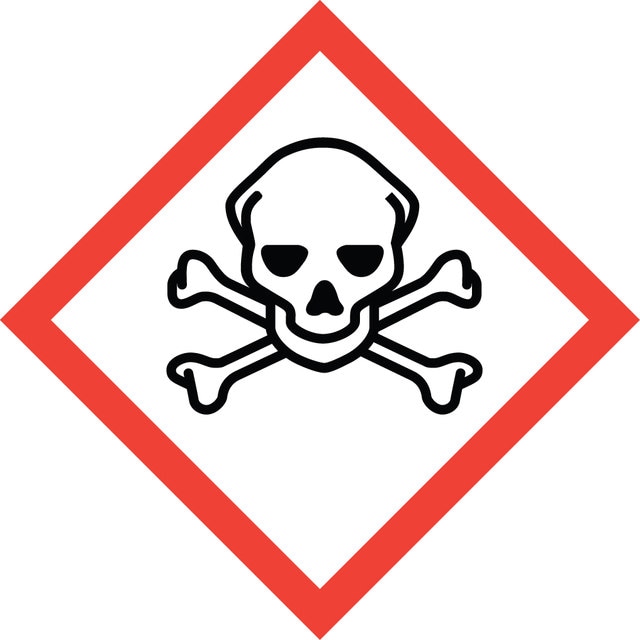27001-M
Formic acid
puriss., meets analytical specifications of DAC, FCC, 98.0-100%
About This Item
vapor density
1.6 (vs air)
Quality Level
vapor pressure
44.8 mmHg ( 20 °C)
grade
puriss.
Assay
98.0-100%
form
liquid
autoignition temp.
1004 °F
quality
meets analytical specifications of DAC, FCC
expl. lim.
57 %
impurities
≤0.001% heavy metals (as Pb)
≤0.05% acetic acid (GC)
evapn. residue
≤0.005%
refractive index
n20/D 1.370 (lit.)
pH
2.2 (20 °C, 2.2 g/L)
bp
100-101 °C (lit.)
mp
8.2-8.4 °C (lit.)
density
1.22 g/mL at 25 °C (lit.)
anion traces
chloride (Cl-): ≤10 ppm
sulfate (SO42-): ≤40 ppm
sulfite (SO32-): in accordance
cation traces
Fe: ≤0.001%
heavy metals (as Pb): ≤0.001%
SMILES string
OC=O
InChI
1S/CH2O2/c2-1-3/h1H,(H,2,3)
InChI key
BDAGIHXWWSANSR-UHFFFAOYSA-N
Application
- Determination of Cotinine and 3-hydroxynicotinine in Human Serum: This study presents a method for detecting nicotine metabolites in human serum using liquid chromatography-tandem mass spectrometry, where formic acid is used to aid in the extraction and detection process (Wang et al., 2024).
- Quantification of Antiretrovirals in Human Tissues: Focuses on a method for quantifying antiretrovirals in tissues using ultra-high performance liquid chromatography-tandem mass spectrometry, where formic acid may enhance the analysis (West et al., 2024).
- Redox Regulation of Ni Hydroxides: This research into the electro-refinery of biomass-derived polyols may involve formic acid in the preparation of samples or in the electrolyte solutions used (Gui et al., 2024).
- Volatile Fatty Acids in Biological Specimens: Discusses a technique for determining volatile fatty acids in various biological samples using HPLC-MS/MS with a low-temperature derivatisation method that likely involves formic acid (Li et al., 2024).
Still not finding the right product?
Explore all of our products under Formic acid
Signal Word
Danger
Hazard Statements
Precautionary Statements
Hazard Classifications
Acute Tox. 3 Inhalation - Acute Tox. 4 Oral - Eye Dam. 1 - Flam. Liq. 3 - Skin Corr. 1A
Supplementary Hazards
Storage Class Code
3 - Flammable liquids
WGK
WGK 1
Flash Point(F)
118.4 °F - closed cup
Flash Point(C)
48 °C - closed cup
Choose from one of the most recent versions:
Certificates of Analysis (COA)
Don't see the Right Version?
If you require a particular version, you can look up a specific certificate by the Lot or Batch number.
Already Own This Product?
Find documentation for the products that you have recently purchased in the Document Library.


